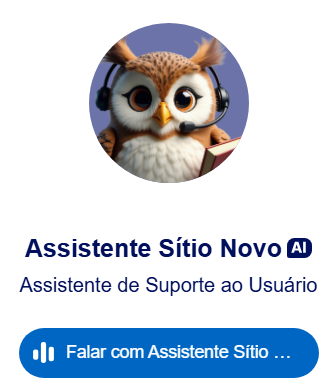TecLibras: Use of Augmented Reality in Education
DOI:
https://doi.org/10.47236/2594-7036.2025.v9.1664Keywords:
Teaching-learning, Brazilian Sign Language, Augmented realityAbstract
This study explores the use of Augmented Reality (AR) as a support tool in the teaching and learning process of the subject "Fundamentals of LIBRAS" (Brazilian Sign Language) at IFTO – Araguatins Campus. The main goal is to promote the use of innovative educational technologies, encouraging inclusion in LIBRAS learning both inside and outside the institution. Conducted over a period of three to six months, the study employed guided activities and observational assessments to evaluate students’ progress in utilizing AR resources. Among the materials developed—by student collaborators—were interactive booklets featuring LIBRAS content on the alphabet, numbers, and greetings, enriched with visual and digital components to enhance accessibility and dynamism in learning. These materials were disseminated to instructors and students, enabling the practical application of AR in classroom instruction. Interviews with students revealed that although many were already familiar with and appreciated AR, its use was still limited by factors such as age and professional demands. Nevertheless, students recognized AR as a valuable tool in the teaching-learning process, highlighting its potential to enhance understanding and promote greater engagement with the content. The findings underscore that AR, when integrated with inclusive teaching methodologies, contributes to more accessible, flexible, and participatory learning. This study highlights its transformative role in higher education and its positive impact on promoting inclusion and expanding access to knowledge.Downloads
Metrics
References
ALMEIDA, J. P.; COSTA, R. T. Tecnologias digitais no ensino superior: desafios e oportunidades. São Paulo: Editora Educação, 2020.
ALVES, Juliana Helena; SILVA, Vanessa Vieira Cardoso da. Plataforma Ler o Mundo: a abordagem triangular em ensino híbrido em uma perspectiva de uso de metodologias ativas. 2021. Trabalho de Conclusão de Curso (Graduação em Artes Visuais) – Faculdade de Artes Visuais, Universidade Federal de Goiás, Goiânia, 2021.
BACICH, Lilian; MORAN, José (Orgs.). Metodologias ativas para uma educação inovadora: uma abordagem teórico-prática. Porto Alegre: Penso, 2018.
CARVALHO, A. A. de. Aplicação de um Programa de Ensino de Palavras em Libras Utilizando Tecnologia de Realidade Aumentada. Revista Brasileira de Educação Especial, v. 17, n. 3, p. 405-422, 2011. Disponível em: scielo.br. Acesso em: 6 jan. 2025.
IFTO – Instituto Federal de Educação, Ciência e Tecnologia do Tocantins. Projeto TECLIBRAS: realidade aumentada como recurso educacional na disciplina de LIBRAS Palmas: IFTO, 2022. Disponível em: https://portal.ifto.edu.br. Acesso em: 20 abr. 2025.
LIMA, F. P.; PEREIRA, A. M. Inovação educacional: metodologias ativas e o papel das tecnologias. Rio de Janeiro: Editora Aprendiz, 2021.
MAGIPIX. Home. Disponível em: https://web.magipix.app/. Acesso em: 06 jan. 2025.
PIAGET, Jean. A psicologia e a educação: um estudo sobre o desenvolvimento mental. 4. ed. São Paulo: Editora Pedagógica, 1974.
POLES, S. de C. Realidade aumentada e representação de LIBRAS. 2021. Trabalho de Conclusão de Curso (Graduação em Tecnologia em Design Gráfico) – Universidade Tecnológica Federal do Paraná, Curitiba, 2021. Disponível em: repositorio.utfpr.edu.br. Acesso em: 6 jan. 2025.
ROCHA, D. F.; SANTOS, M. L. Realidade Aumentada e suas aplicações educacionais. Fortaleza: Editora Acadêmica, 2022.
SILVA, L. R.; SOUZA, M. T. Metodologias ativas no ensino: desafios e práticas inovadoras. Belo Horizonte: Editora Saber, 2019.
SILVA, F. A educação e as novas tecnologias. Revista de Educação e Tecnologia, v. 5, n. 1, p. 9-20, 2010.
SILVA, João. O uso do QR Code como metodologia ativa no contexto escolar. 2024. Disponível em: https://www.editoracientifica.com.br/articles/code/240817400?utm_source=chatgpt.com Acesso em: 6 jan. 2025.
SILVA, L. R. da; REIS, D. S. dos; LOPES, M. C. LibrAR: aplicativo de aprendizagem de libras usando realidade aumentada e realidade virtual em dispositivo móvel. In: Congresso Brasileiro de Informática na Educação, 7., 2018, Fortaleza (CE). Anais... Fortaleza (CE): SBC, 2018. p. 946-955. Disponível em: repositorio.ufc.br. Acesso em: 6 jan. 2025. DOI: https://doi.org/10.5753/cbie.wcbie.2018.946
SILVA, Vanilson Pereira; NOBRE, José Filho Ferreira. A influência das tecnologias no ensino fundamental I: desafios e oportunidades. JNT - Facit Business and Technology Journal, v. 56, n. 1, p. 356-370, nov. 2024. Disponível em: revistas.faculdadefacit.edu.br. Acesso em: 6 fev. 2025.
SOUZA, A. M.; LIMA, P. F. Tecnologias no ensino: impactos e perspectivas no ambiente educacional. São Paulo: Editora Educação, 2021.
SOUSA, M. A importância das tecnologias na educação. Revista de Ensino e Inovação, v. 3, n. 2, p. 25-30, 2011. DOI: https://doi.org/10.7476/9788578791247
SUGIZAKI, L.; MENDES, L. A valorização da Língua Brasileira de Sinais (LIBRAS) no processo de inclusão. Revista Brasileira de Educação e Inclusão, v. 10, n. 2, p. 123-135, 2015.
TAJRA, L. A evolução das tecnologias educacionais. Educação e Sociedade, v. 12, p. 39-42, 2008.
TAJRA, L. O papel do professor na educação contemporânea. In: SILVA, R. (org.). Novas abordagens pedagógicas. São Paulo: Editora Educacional, 2012. p. 98.
UNITY TECHNOLOGIES. Crie jogos educacionais com o EdTech | Unity. Disponível em: https://unity.com/pt/solutions/edtech. Acesso em: 6 jan. 2025.
Downloads
Additional Files
Published
How to Cite
Issue
Section
License
Copyright (c) 2025 Kelly Luana Sousa Silva, Rogério Pereira de Sousa

This work is licensed under a Creative Commons Attribution 4.0 International License.
It allows sharing, adaptation, and use for any purpose, including commercial use, provided proper attribution is given to the authors and to Revista Sítio Novo.
The authors declare that the work is original and has not been previously published, in whole or in part, except on recognized preprint servers, if declared, and that no other similar manuscript authored by them is published or under review by another journal, whether printed or electronic.
They declare that they have not violated or infringed upon any proprietary rights of others, and that all citations in the text are factual or based on research with scientifically significant accuracy.
The authors retain the copyright of the manuscripts published in this journal, allowing unrestricted use of their content, provided that the original authorship and the publication source are properly cited.
















